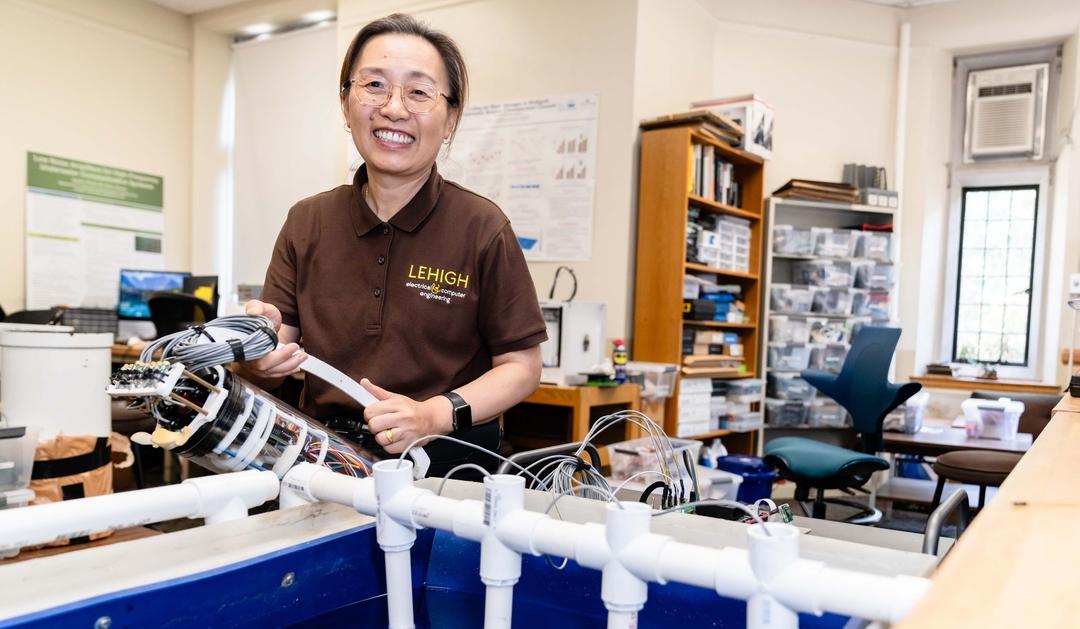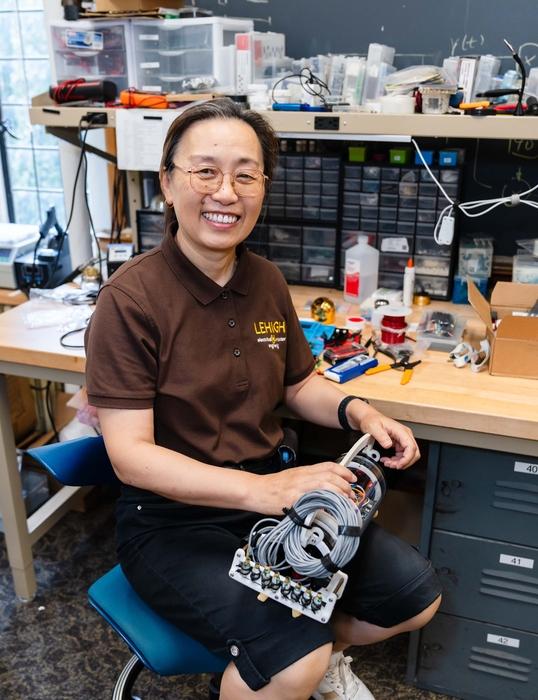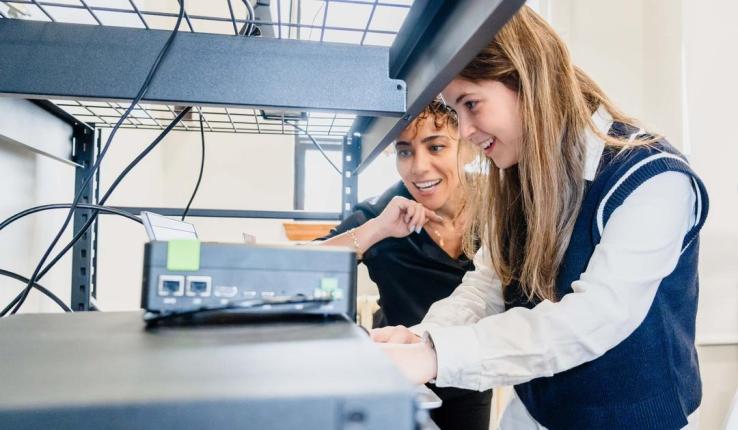With her team, Zheng has developed many algorithms to account for difficulties like echo and Doppler effect, and has created a cutting-edge prototype using high-frequency Multiple-Input Multiple-Output (MIMO) acoustic communication technology. Essentially, the prototype utilizes multiple underwater transmitters, which are devices that send out signals, to carry different bits of data simultaneously, increasing the data transmission rate.
The signals are much weaker than sonar waves and their frequency is beyond the range that marine mammals can hear, reducing the impact on marine ecosystems. The signals are also high-frequency, which provides more bandwidth.
“The challenge is, when you send parallel signals in the water, they all mix together,” Zheng said. “When you receive them, you have to separate them, and echoes and Doppler effect make that even more challenging. My research [seeks] to figure out how to untangle this mess and get all the bits detected.”
The key technology her team uses to achieve this is turbo equalization, which involves using the transmitters to broadcast a small group of training data, learning about the echoes and Doppler effect, then determining how those unknown bits are tangled by using back-and-forth guesses.
“It’s a sort of machine learning, but it’s learned on the fly,” Zheng said.
Her algorithms have been tested in many ocean experiments with results that are promising for real-world applications, and the algorithms have been granted four U.S. patents, Zheng said.
Zheng’s innovation can enable image and video transmission directly through water, which could transform industries reliant on underwater operations and communication, such as offshore infrastructure monitoring, deep-sea exploration and research, and even military operations.
“For example, autonomous underwater vehicles (AUVs) can show each other what they see underwater, and then the whole fleet can organize or figure out a mission plan to survey an environment.”
Zheng is working on bringing her technology to market with the recent launch of her own company, Sea-Gal Technologies, which is fueled by federal and private funding.
In its infancy in 2023, Zheng entered Sea-Gal Technologies in the iDEX Underwater Communication Challenge, a pitch competition sponsored by the U.S. Department of Defense, and she won a $50,000 prize that helped jumpstart the company. In 2024, Zheng said she used that money to hire a Lehigh student and apply for other funding.
Zheng said she took a sabbatical during the 2024-25 academic year to work on the business.
“Learning the business side for a whole year is actually a lot of fun, but also a lot of work,” Zheng said.
This year, Sea-Gal Technologies received the National Oceanic and Atmospheric Administration (NOAA) Ocean Enterprise Accelerator Award, and also received an award from America’s Seed Fund powered by the National Science Foundation (NSF).
“Acoustic Modems for Real-Time Underwater Wireless Communications,” was also selected as one of five Strategic Research Translation Projects (STRPs) through Lehigh’s Research Translation AcceLUrator (RTA) program, which is a part of the National Science Foundation's Accelerating Research Translation (ART) initiative. The program is dedicated to bridging the gap between academic research and societal impact by offering participants comprehensive translational education, hands-on support and pathways to bring their innovations to life.
In the future, Zheng aspires to develop underwater WiFi base stations that would make connecting to the internet through underwater platforms ubiquitous.
Zheng said a particular question inspired her to take a chance and start her own company based on her research.
“When I leave my professional life, what can I tell people I accomplished? I can publish 100 papers, but I don’t have a real thing made,” Zheng said. “So that’s my motivation. The motivation is not just to make money—it is trying to really produce something that’s meaningful.”






